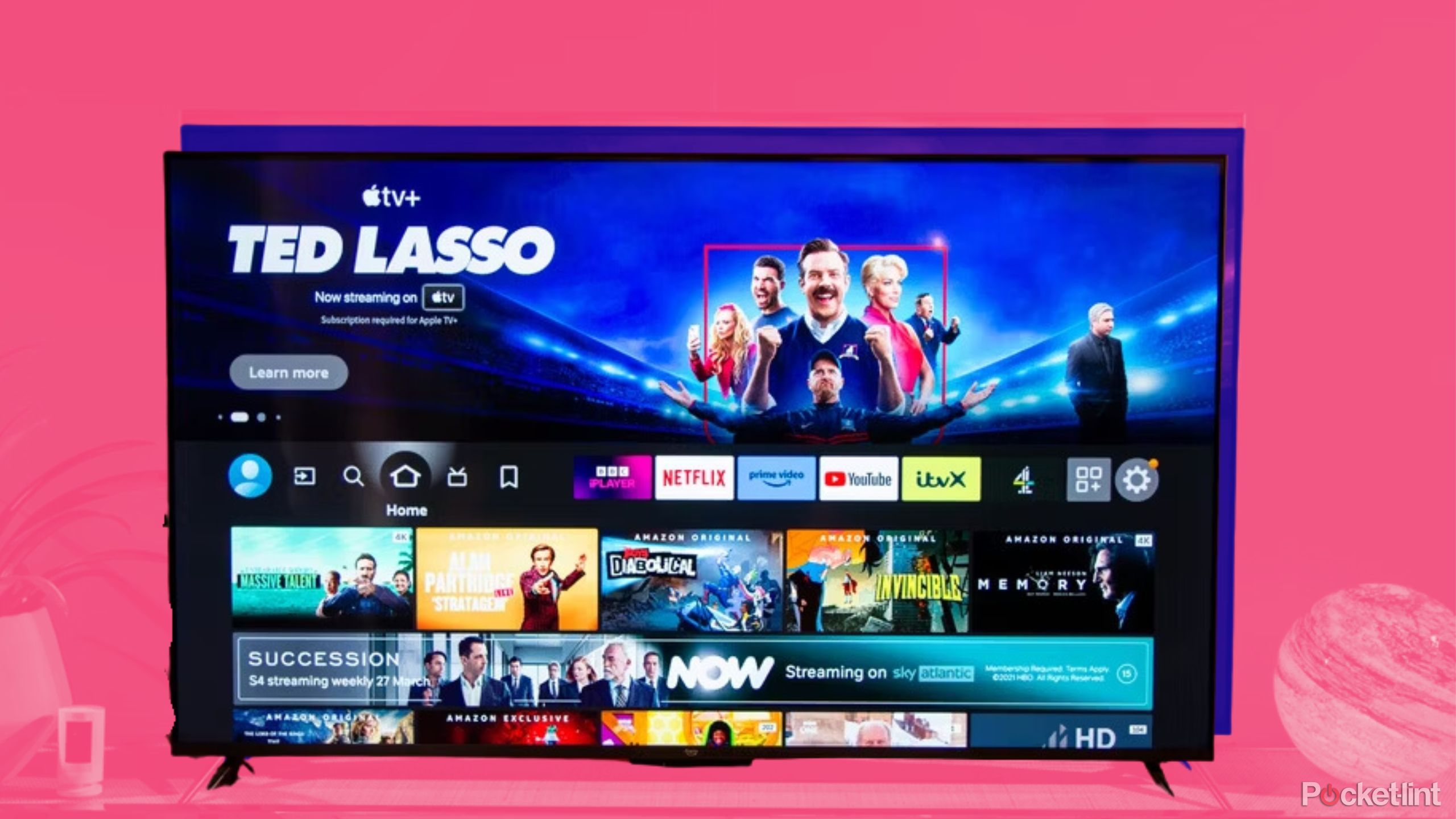Key Takeaways
- LED TVs use LEDs for backlight, while mini-LEDs have a more advanced backlight system.
- mini-LED TVs offer better image quality, brightness, and contrast, but are more expensive.
- LED TVs are more power-efficient and have no size limit, but their image quality is not as good as newer technologies.
If you’ve been shopping around for a new TV, two terms you’ve probably seen come up are LED and mini-LED. Both of these TV technologies utilize light-emitting diodes (LEDs) for display illumination, but they differ significantly in the viewing experience they offer.
Related
5 reasons I’d buy a mini-LED TV over an OLED TV
The future is bright for mini-LED TVs as they continue to rival OLED screens with stunning colors and quality contrast.
LED TVs have been a mainstay in the TV market for more than a decade, and they use an array of LEDs to backlight an old-school style LCD panel. mini-LED, on the other hand, is a more recent innovation that attempts to bridge the gap between traditional LED backlighting and the newer, premium OLED screens.
What is the actual difference under the hood though when it comes to LED and mini-LED TVs? Both offer a great viewing experience when it comes to watching your favorite movies, TV shows, or playing your favorite games, but they also differ significantly. Read on to find out how.
Pricing
mini-LED tech is newer and more advanced, but it comes at a cost
There’s been a wide range of improvements to LED technology in the past two decades, meaning that even the cheapest LED TVs produce decent image quality. You might also see TVs that are called QLED, not to be confused with OLED. “QLED” is a marketing term by Samsung, and it describes the LED panels inside its TVs. The Q stands for quantum dot, and Samsung claims that the quantum dots help to produce a more colorful and contrasted image. I own a Samsung QLED, and I personally agree with Samsung’s claim here, I do notice a bit more pop to the colors on the screen when compared with a TCL LED that I used to own.

Related
5 reasons I’d buy a QLED TV over a more expensive OLED TV
While OLED TVs stand out in one key, QLED models are still popular for plenty of good reasons.
On the other hand, the first noticeable downside to a mini-LED TV over an LED TV you’ll likely notice is the price. mini-LED TVs run more expensively than their LED counterparts. The technology is still relatively new, and it requires a more intensive manufacturing process, all which drive up the total price. mini-LED TVs are a premium product, and as such, you will end up paying a premium price for them. Lastly, because LED TVs dont have as many LEDs as a mini-LED TV, they are more power efficient. If you live somewhere with high energy costs, it may be worth it to go with an LED TV over a mini-LED TV.
LED displays are most popular for watching or playing HDR content.
Sizing
There’s no upper cap to how big an LED TV can be
Netflix/ Pocket-lint
One of the best features for LED screens are that there’s no size limit to how big they can be. Long before I became a writer, I worked in a retail store selling the latest and greatest TVs, and I’ve seen LED TVs as large as 393-inches. Now, unless you are willing to spend hundreds of thousands of dollars on a TV, you’re unlikely to get a TV that big. These are LEDs that are designed to cover an entire wall, and you’re more likely to see them in places such as malls or concert venues than in someone’s home. Because of how many mini-LEDs are needed in a mini-LED TV, there is typically an upper cap in the consumer market. mini-LED TVs start to get distorted image quality issues when they are above 65-inches.
Image quality
LEDs are not as sharp of image quality as newer TV tech
The primary issue with LED TVs in 2024 is that their picture quality is not up to par with the more-recent TV technologies. While I’ve highlighted a lot of the improvements that have come to LED TVs in the past twenty years, there’s just no denying the fact that they lag behind the newer TV technologies, particularly OLED and mini-LED, when it comes to overall picture quality and color contrast.
The primary benefit of a mini-LED TV over a standard LED TV is that mini-LED screens can get a lot brighter. This is because, as I mentioned earlier, there are a lot more LEDs working to create a backlit image on a mini-LED TV than on an LED TV. The size of a mini-LED TV’s LEDs are often 0.2 millimeters in size, which allows for LEDs to be behind the liquid crystal display. This allows for colors to pop more, and for modes like Filmmaker Mode, found in some modern TVs, to truly achieve a better visual parity with what the director had in mind. It’s not perfect, and honestly, no TV is perfect at nailing how 8K cinema cameras look (yet), but a mini-LED will get you closer to the final result than an older LED LCD.

Related
4 reasons OLED TVs are actually worth the hype
OLED TVs aren’t cheap, but their stunning contrast and stylish design are among the many reasons why they are worth every penny.
mini-LED TVs also all feature local dimming, meaning they are great for HDR content. mini-LED TVs are able to dim the individual LEDs behind the screen to create a better contrast between the bright and dark parts of an image on screen. Some LED displays feature multiple backlights that can perform local dimming. They allow the TV to automatically dim different parts of the screen, and when implemented properly, they can provide a greater range of contrast for HDR content. These displays are most popular for watching or playing HDR content, but you won’t find them on all LED TVs like you would on mini-LED TVs.
Gaming
Gamers should be aware of the limitations of mini-LED tech
If you walk into a store and compare a mini-LED side-by-side with an OLED TV, you’ll notice that the black levels aren’t as deep on a mini-LED TV, and the overall contrast ratio isn’t as strong as it would be on an OLED screen. Again, while it is a step up from a standard LED LCD, it’s still not fully on par with OLEDs.
Gamers in particular should know that when buying a new TV, mini-LEDs can produce some great results for HDR-enabled games, as they pack a slower refresh rate and pixel response when compared to OLED screens.
Gamers in particular should know that when buying a new TV, mini-LEDs can produce some great results for HDR-enabled games but they also pack a slower refresh rate and pixel response when compared to OLED screens. Yes, they are faster than your typical LED LCD TV, but if you want the end all be all, you probably want to go with a solid OLED gaming TV instead. It’s not going to kill the gaming experience if you do decide to go with a mini-LED TV over an OLED, but it’s still something to keep in mind.
Which should you buy: mini-LED or LED TVs?
If you are shopping for a new TV and image quality is the most important concern of yours, especially if you want to play HDR-enabled games, I would suggest going with a mini-LED TV. On the other hand, if you are shopping for a new TV on a budget, you can get a great deal on an LED TV that still produces great image quality for movie and TV watching. Ultimately, deciding between a LED and mini-LED will come down to your budget.
Owning a Samsung QLED TV myself, I couldn’t be happier with it when it comes to watching movies and playing the occasional game.
You always have to spend a little extra if you want newer tech, and mini-LED is no exception here. That being said, you should look into some of the more advanced features of older LED TVs. Owning a Samsung QLED TV myself, I couldn’t be happier with it when it comes to watching movies and playing the occasional game. My best recommendation for anyone shopping for a new TV is to try to go to a showroom in a store like Best Buy near you so that you can see the differences for yourself before investing in new tech.

Related
Best 42 and 43-inch TVs: Affordable 4K for any room
Compare optimally sized TVs from top brands like LG, Samsung, and Sony.
FAQ
Q: What is the lifespan of a Mini-LED TV?
There’s no exact number of hours that a Mini-LED TV will last you, as different use cases provide for different outcomes when it comes to the lifespan of a TV. However, on average, Mini-LED TVs should last around 50,000 hours, or five years, before issues such as screen burn in become apparent.
Q: Which is better for gaming, Mini-LED or LED LCD?
There’s little to no difference when it comes to gaming on a Mini-LED or LED LCD. However, games that support HDR content will more often than not perform better on a Mini-LED television than on a standard LED.
Q: What are LED TVs?
Put simply, an LED is a type of display, in which the acronym means “light-emitting diode.” LED TVs all use a liquid crystal display (LCD) panel, also called a “backlight” to control where and how light is distributed onto the screen. However, it’s important to note that not all LCDs are LED TVs. It’s a bit confusing, but the simplest way to put it is that an LED TV is a type of LCD TV, but LED TVs have an additional layer of diodes, whereas standard LCD TVs only use fluorescent light bulbs.
Q: What are mini-LED TVs?
mini-LED is the next evolution of LED TVs. Both mini-LED and LED TVs use the same light-emitting diodes to create an image on an LCD panel. The primary differences between LED TVs and mini-LED TVs comes down to the size and amount of LEDs used to create an image on your screen. mini-LED TVs use significantly more LEDs to create an image of your screen, and they are also a lot smaller than their standard LED counterparts.
mini-LED TVs aim to deliver a similar contrast level that is achieved by OLED TVs. As mini-LED TVs have more LEDs in their backlights, the image that a mini-LED TV creates is brighter than a typical LED screen. Just like some LED screens, mini-LED TVs also feature local dimming features, which is a way to improve the contrast ratio of your image, but just like with LED LCDs, it’s not perfect.
Trending Products

Cooler Master MasterBox Q300L Micro-ATX Tower with Magnetic Design Dust Filter, Transparent Acrylic Side Panel…

ASUS TUF Gaming GT301 ZAKU II Edition ATX mid-Tower Compact case with Tempered Glass Side Panel, Honeycomb Front Panel…

ASUS TUF Gaming GT501 Mid-Tower Computer Case for up to EATX Motherboards with USB 3.0 Front Panel Cases GT501/GRY/WITH…

be quiet! Pure Base 500DX Black, Mid Tower ATX case, ARGB, 3 pre-installed Pure Wings 2, BGW37, tempered glass window

ASUS ROG Strix Helios GX601 White Edition RGB Mid-Tower Computer Case for ATX/EATX Motherboards with tempered glass…
















